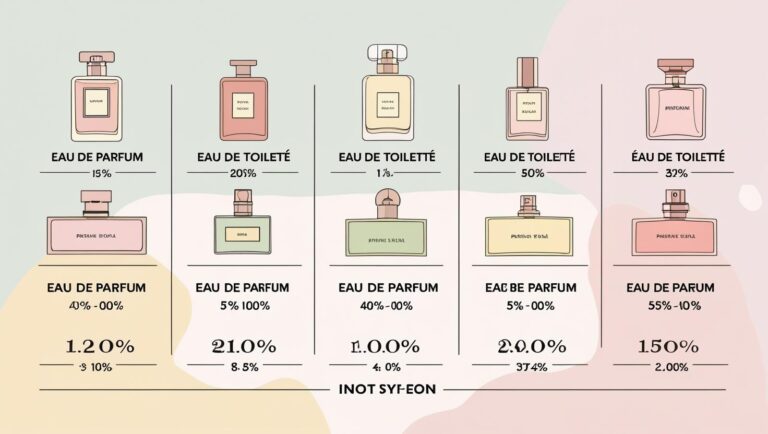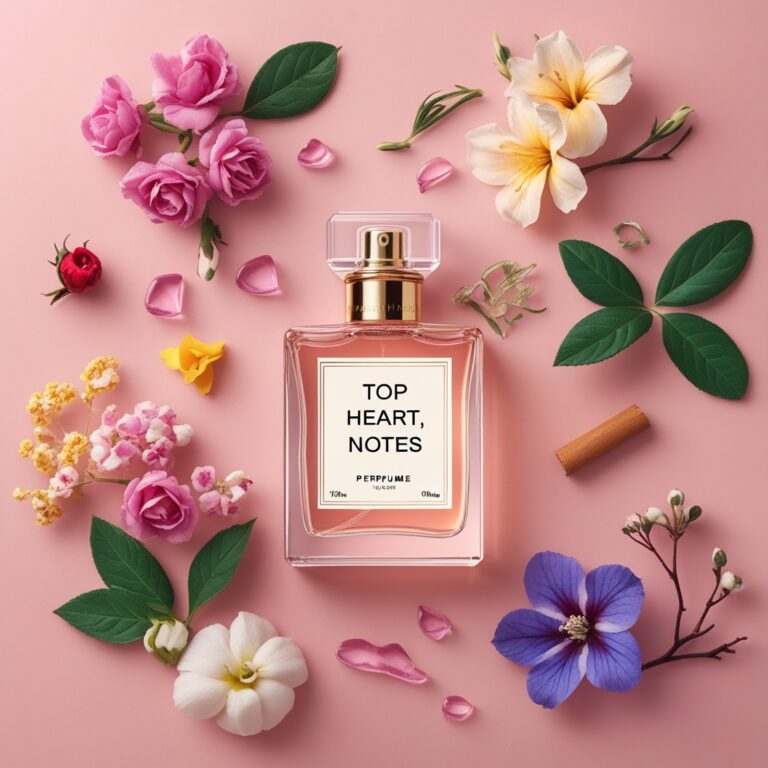What Are the Top Notes and Why Do They Matter?

Choosing the right perfume is difficult. Every perfume has unique smells that you notice first. This guide will tell you about these initial scents, called initial notes , and their importance.
initial notes are crucial in perfumes.
Key Takeaways
- initial notes in perfume are the initial scents, such as citrus, herbs, and light fruits.
- These scents last for 15 to 30 minutes because they evaporate quickly.
- initial perception come from initial notes leading into the deeper heart and base notes.
- Common initial notes ingredients include lemon, bergamot, mint, and lavender for freshness.
- Despite fading fast, initial notes play a key role in our first liking of a perfume.

What Are Fragrance Notes?
 Fragrance notes are like layers in a cake, each affecting the perfume’s scent. There is top, middle (heart), and base notes. initial notes are the first scents you smell but fade quickly.
Fragrance notes are like layers in a cake, each affecting the perfume’s scent. There is top, middle (heart), and base notes. initial notes are the first scents you smell but fade quickly.
Middle ones last longer and form the perfume’s main fragrance. Base notes add depth and stay on your skin longest.
Perfumes mix these three types for a unique smell that evolves over time.
initial notes often include acidic and fresh herbs because they’re light. For middle notes, floral or spice scents provide lasting aroma. Woody or musky fragrances are common base notes, giving a long-lasting impression.
Each note blends to maintain the fragrance’s appeal from start to finish.
Understanding first notes
ead notes are the initial scents of a perfume, acting as an introduction to the fragrance layers that follow. They create the initial perception and guide you into the heart notes.
Characteristics of Ead notes
Ead notes give the first scent you notice in a perfume. They are light and fresh, lasting only 15 to 30 minutes. These notes usually come from 3. acidic fruits like lemons and oranges or herbs such as lavender and rosemary, catching your attention immediately.
Because they dissipate rapidly, Ead notes have a short life compared to longer-lasting base or middle notes. Common choices for these initial scents include acidic smells, some mints, and light fruits.
They lay the groundwork for heart notes by providing an initial burst of fragrance that welcomes deeper aromas.
Common Ingredients in first notes
first notes set the initial scent of a perfume, leaving a lasting impression.
- Citrus fruits like lemon, bergamot, and orange bring a fresh opening.
- Herbs such as mint and basil use essential oils to add a crisp aroma.
- Light fruits including apple and berry introduce sweetness early on.
- Spices like cinnamon and ginger infuse immediate warmth and spice.
- Florals featuring lavender and rose create an inviting soft tone from the start.
These ingredients are crucial in shaping the initial perception the perfume on both the wearer and those nearby.
Why first notes Matter
first notes are the fragrance’s initial perception. They are light and airy, featuring acidic and fresh herbs. These ingredients dissipate rapidly , sometimes within 15 minutes. Despite fading fast, first notes play a crucial role in initial reactions to perfume.
They grab attention and can turn uncertainty into approval by their immediate impact. Heart and base notes come later with richer, longer-lasting smells. Top notes often determine whether someone will like the fragrance before they experience the deeper heart and base notes.
How Top Notes Influence a Fragrance
lemon and herb scents are the first you notice in a perfume. These top notes last from 5 to 15 minutes and make the fragrance welcoming. They introduce the scent but disappear quickly.
The full story of a perfume comes from its heart and base notes, which create its lasting impression. Without top notes, these deeper aromas might seem too intense at first. Lemon, orange, basil, and lavender are common top notes that help transition into the scent’s core fragrances smoothly.
Conclusion
Top notes are the initial scents you detect in a perfume. They catch your attention and prepare the way for middle and base notes. Consisting of lemon , herbs, and flowers, these light smells fade quickly but are vital for creating a memorable experience.
Why? Because they shape your initial perception of the fragrance. So when choosing a perfume, focus on the top notes—they’re your introduction to what follows.
FAQs
1. What are top notes in a perfume?
Top notes, also known as head notes, are the initial fragrance compounds you smell when applying a fragrance. They typically consist of fresh scents like lemon and essential oils.
2. Why do top notes matter in a perfume?
Top notes matter because they give the first impression of a fragrance. They’re volatile notes that evaporate quickly but leave a lasting impact on how the perfume is perceived.
3. How do top, middle, and base notes relate to each other?
The three layers of scent – top, middle (heart), and base – work together to create balance in a fragrance. Top gives the first impression; heart or middle provides body while base offers depth and longevity.
4. Are there any concerns with certain perfume ingredients?
Yes! Some research by groups like The Environmental Working Group shows potential endocrine disruption from certain chemicals such as Galaxolide and Tonalide used in fragrances.
5. Can I identify different types of perfume notes?
Absolutely! With practice, you can learn to distinguish between various types of aroma including woody, citrusy or even cookie-like tones within top, heart or base categories.




